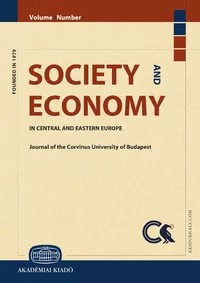Shadow banking versus secondary shadow banking – The case of Hungary
Shadow banking versus secondary shadow banking – The case of Hungary
Author(s): András Bethlendi, Katalin MérőSubject(s): National Economy
Published by: Akadémiai Kiadó
Keywords: shadow banking; secondary shadow banking; market-based finance; FX lending; foreign interbank lending;
Summary/Abstract: In this article we analyze the Hungarian shadow banking system. We point out that the Hungarian shadow banking system is not only much less developed than that of the EU's developed countries, but also structurally different. A further specific feature of the Hungarian financial system is what we call the secondary shadow banking system, through which foreign shadow banking funds do not finance the domestic banking system directly, but through foreign interbank funds and related cross currency basis swaps. The aim of our analysis is to explore the reasons for these specificities, to analyze the risks of the Hungarian shadow banking, and secondary shadow banking systems, and to show that the interconnectedness between banking and shadow banking may not only occur through direct exposure, but also indirectly through the presence of secondary shadow banking.
Journal: Society and Economy. In Central and Eastern Europe ǀ Journal of the Corvinus University of Budapest
- Issue Year: 46/2024
- Issue No: 3
- Page Range: 256-274
- Page Count: 19
- Language: English

